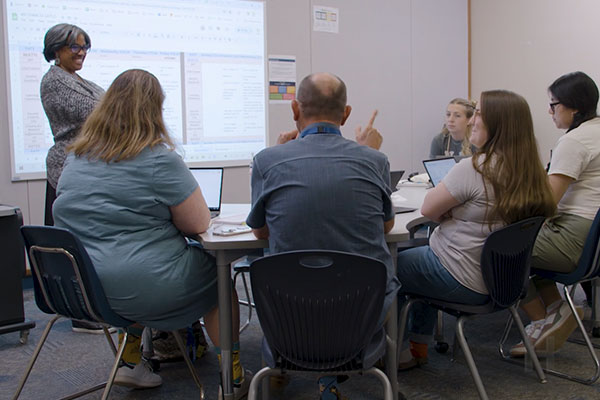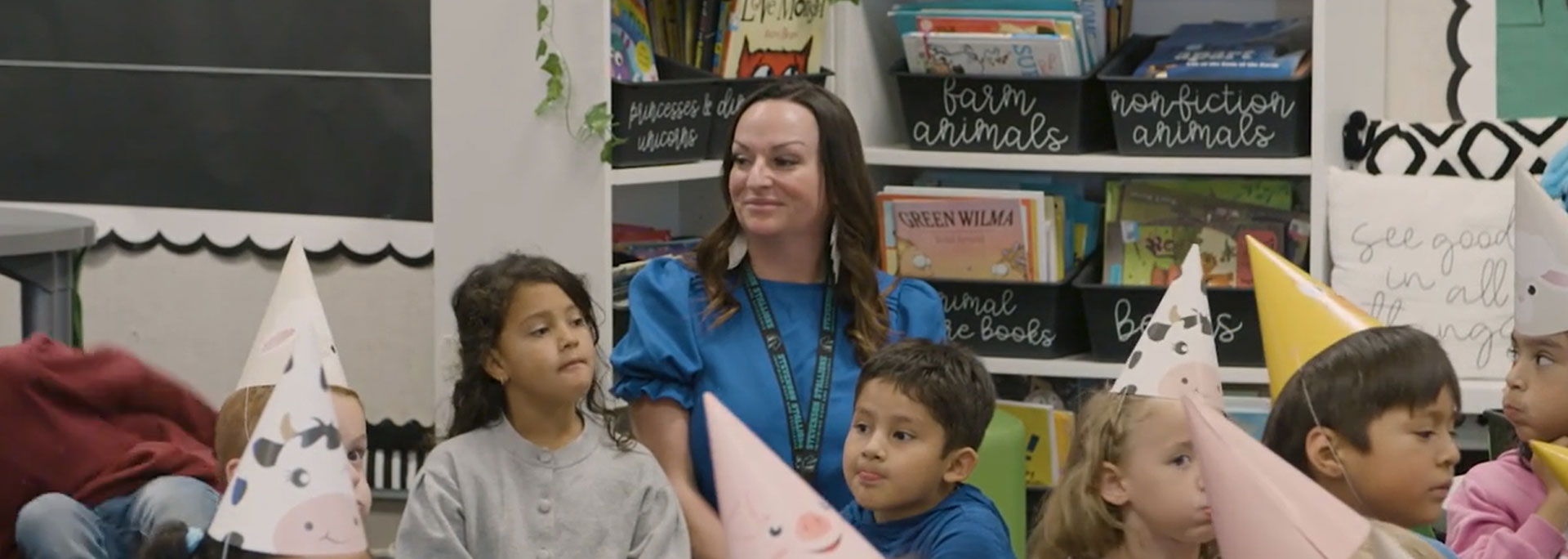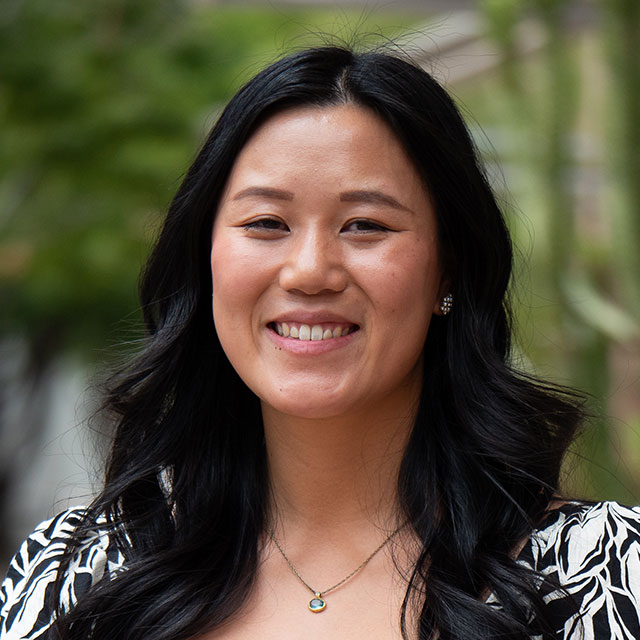When Kelsey Christofferson was applying for her principalship, she had the opportunity to visit Stevenson Elementary School. At the time, the Mesa, Ariz.-based school was starting to think about strategic team-based staffing. The chance to lead a school where teams of educators with distributed expertise wrap around students was the main reason Christofferson chose Stevenson.
“There’s so much potential that can happen when we all start truly collaborating with each other. … I think that’s pretty amazing, and it’s specifically why I chose to come be part of the great work happening here,” Christofferson shared in one of two newly-released videos for Next Education Workforce™ Virtual Site Visits.
Featuring the perspectives and experiences of principals, superintendents and school leaders, the videos focus on how teams allow students and educators to thrive while also delving into the nuances of transitioning schools from conventional one-teacher, one-classroom models to Next Education Workforce strategic school staffing models.
Rethinking facets of school infrastructure such as master schedules, hiring and budgeting can be a big hurdle school and system leaders have to overcome, especially since so much about education staffing has remained unchanged for decades.
“I think that in education we sometimes really like the fact that we do it the same way every year and we staff the same way and it looks just like this and we function in this box, and sometimes we’re almost checking a list,” Carrie Furedy, associate superintendent of the Kyrene School District, said.
However, making changes to the district’s staffing model was vital as it struggled to fill positions that, at one time, would have hundreds of applicants. When the Kyrene School District began to explore team-based models in 2018, Furedy said the teachers’ association was brought into the conversation at the very beginning. Even now, Furedy said she encourages the principals at her schools to “speak loudly and often” about team-based models so the models continue to serve both the educators and students.
Our biggest asset is our teaching staff and our employees in Mesa Public Schools. So when they have a better experience, they’re going to deliver better experiences for our students
Andi Fourlis
Delivering better experiences for educators was also a priority for Mesa Public Schools, according to Superintendent Andi Fourlis. The district began exploring strategic staffing models during the 2019-20 school year, and, at the time, Fourlis was the deputy superintendent in charge of student services. In addition to prioritizing learning outcomes for students, school and system leaders within Mesa Public Schools understood the need to create staffing models to address both retention and recruitment.
“Our biggest asset is our teaching staff and our employees in Mesa Public Schools. So when they have a better experience, they’re going to deliver better experiences for our students,” Fourlis said.
The risk is worth the reward
When asked to describe how team-based strategic school staffing models have impacted their schools, the principals from Stevenson Elementary School, Kyrene de las Manitas Innovation Academy and Westwood High School highlighted the ways in which both students and educators are thriving.
Due to teams, Christofferson said she’s seen improvement in student discipline at Stevenson because the students not only have the chance to move more frequently during the day but are more engaged due to specialized learning opportunities and having multiple teachers who are supporting their needs.
At Kyrene de las Manitas, Principal Melissa Gradnigo Taylor shared that students and educators have reported an increased sense of belonging since launching teams. And at Westwood High School, teacher satisfaction is up, according to Principal Christopher Gilmore.
However, all three principals are quick to emphasize that launching teams is not a quick or easy process. It takes time to gather key stakeholder input, build consensus, plan a master schedule, and hire and budget for teams. It takes risk and, ultimately, a lot of trial and error.

As Gradnigo Taylor said, building team-based models is not about perfection, it’s about growing.
“This year is all about me learning all that I need to learn and us figuring out our systems and what systems we need to tweak and then what we need to add. … It’s just sitting right there in that place as [the educators] learn their voice and they learn their strengths and their weaknesses with one another,” she said. “I just get so tickled and I love it ‘cause they’re just embracing it, and I see the growth.”
Gilmore shared a similar sentiment, offering support and encouragement to all of the teachers at Stevenson who are part of team-based models.
“We can’t go through life without experiencing that failure to become a better person or become a better educator. And I think that’s been stamped out of so many educators that they’re afraid to go out on a limb,” Gilmore said. “I want our teachers to know if something goes bad, I’m just as proud of them … because I know they’re gonna be a better teacher the next time.”

Kyrene de las Manitas Innovation Academy: School spotlight
Kyrene de las Manitas Innovation Academy is committed to engaging students in a dynamic learning environment that promotes academic excellence and prepares them to be innovators and leaders of tomorrow. In this resource, you'll learn how they're implementing a Next Education Workforce model.

Stevenson Elementary: School profile
Stevenson Elementary School is a Title I school located in Mesa, Arizona that takes a dynamic approach to serving about 700 students in preschool through 6th grade. The school’s Next Education Workforce model wraps teams of educators around students in grades K-6 with the goal of providing deeper and personalized learning. In this resource, you'll find out how they're implementing a Next Education Workforce model.

Private: Westwood High School: Academy Teams profile
Approximately 900 ninth grade students at Westwood High School in Mesa, Arizona are distributed across six Academy Teams. Each core team consists of at least four educators: a lead teacher and three certified teachers. Depending on students’ needs, special educators, English Language Learner educators, MLFC residents and paraeducators may also be included on the team. Here, you'll learn how the school is implementing a team-based model.



